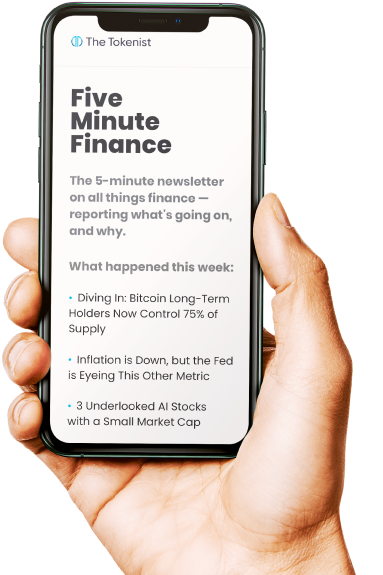
Spotify Stock Slides After Q2 Miss — But is the Dip a Buy Opportunity?
On Tuesday, the media streaming company Spotify Technology S.A. (NYSE: SPOT) released its Q2 2025 earnings report. SPOT stock took nearly a 9% dive, following missed performance expectations. Benzinga-polled analysts placed a $2.11 earnings per share (EPS) target for Spotify to beat, alongside $4.84 billion revenue. Yet, the Swedish company reported 48 48-cent EPS loss below the consensus and $4.75 billion in net sales.
At press time, SPOT stock is priced at $635.91 per share, significantly above the 52-week average of $519.78 per share. Just a month ago on June 26th, SPOT saw its all-time high price of $775.90 per share. After such a profit-taking opportunity, stock prices typically decline in the short-term.
But given Spotify’s business model, is this week’s SPOT dip an opportunity ahead of new highs? First, let’s examine Spotify’s Q2 financials.
Spotify: Still a Healthy Growth Stock
Just like Netflix, Spotify is considered a tech growth company. Over a year, even their performance has followed similar highs and dips, with NFLX gaining 86% value while SPOT rising by 94%. Likewise, both companies are engaged in the balancing act of a freemium business model, mixing ad-supported tiers with paid premium subscriptions.
In Q2, Spotify reported 10% revenue growth year-over-year, followed by a 11% monthly active user (MAU) increase to 696 million. More importantly, the company managed to increase premium subscribers by 12% to 276 million.
Equally so, Spotify increased its gross margin, as a measure of profitability, from 31.1% in Q1 to 31.5% in Q2 – an increase of 227 basis points (bp) year-over-year. For comparison, in early 2020, Spotify’s gross margin was 25.65%. Expectedly, the gross margin for paid subscribers shows slower growth, at 33.1% or 171 bp, while ad-supported tier grew 495 bp, representing 18.3% gross margin. Overall, Spotify’s operating income increased by 53% YoY to $468 million, leaving the company with a free cash flow of $807 million, an uptick of 43% YoY.
Join our Telegram group and never miss a breaking digital asset story.
Did Spotify Outperform Its Guidance?
From the perspective of beating its own guidance, Spotify beat the MAU count at 696 million reported vs 689 million expected. Likewise, the company’s premium subscriber count outperformed, at 276 million reported vs 273 million expected.
However, financial expectations tell a different story. Although the 31.5% gross margin was in-line with expectations, both the total revenue and operating income fell short. Spotify’s total revenue guidance was at €4.3 billion vs €4.2 billion reported, while operating income was expected at €539 million vs €406 million reported.
The culprit is a significant 8% YoY uptick in operating expenses, having returned to Q2 ‘23 level.
The operating cost increase is driven by employee salaries and benefits (Social Charges), marketing and professional services related to cloud streaming infrastructure. Another cause for SPOT shareholder anxiety comes from a lower-than-expected Q3 outlook.
While the company’s revenue forecast in the next quarter sits at €4.2 billion ($4.95 billion), analyst consensus is $5.15 billion. Spotify expects to add 14 million new MAUs to a total of 710 million, of which 5 million should come from premium subscribers to a total of 281 million.
Lastly, against the expected €539 million operating income in Q2, which fell short of €406 million, Spotify is now more grounded with a forecast of €485 million operating income in Q3.
The Bottom Line
At this point in Spotify’s journey, it is safe to say the company captured the network effect – the same force that keeps X so influential, Netflix synonymous with movie-watching, and one that maintains Microsoft’s Windows OS dominance. Accordingly, labels, podcasters, artists and music rights holders will continue to perceive Spotify as the go-to music streaming platform in exchange for royalties.
On the user engagement front, Spotify’s higher workforce expense is likely related. Namely, more full-time employees are needed to roll out the next generation of AI-driven services, from AI DJ and podcast translations to AI ads, voice translations, and personalized playlists based on user preferences.
Although AI is perceived as an ultimate automation tool that reduces the workforce, this is not the case when such features are first deployed in a robust manner that is more productive rather than disruptive.
With that said, current SPOT price targets suggest a dip opportunity in the making. According to WSJ data, no analysts recommend selling, while the majority are bullish against holding at a 2:1 ratio (21 “buy” vs 11 “hold”). Against the present SPOT price of $635.91, this puts the average SPOT price target at €649.41 ($748) per share.
Disclaimer: The author does not hold or have a position in any securities discussed in the article. All stock prices were quoted at the time of writing.




